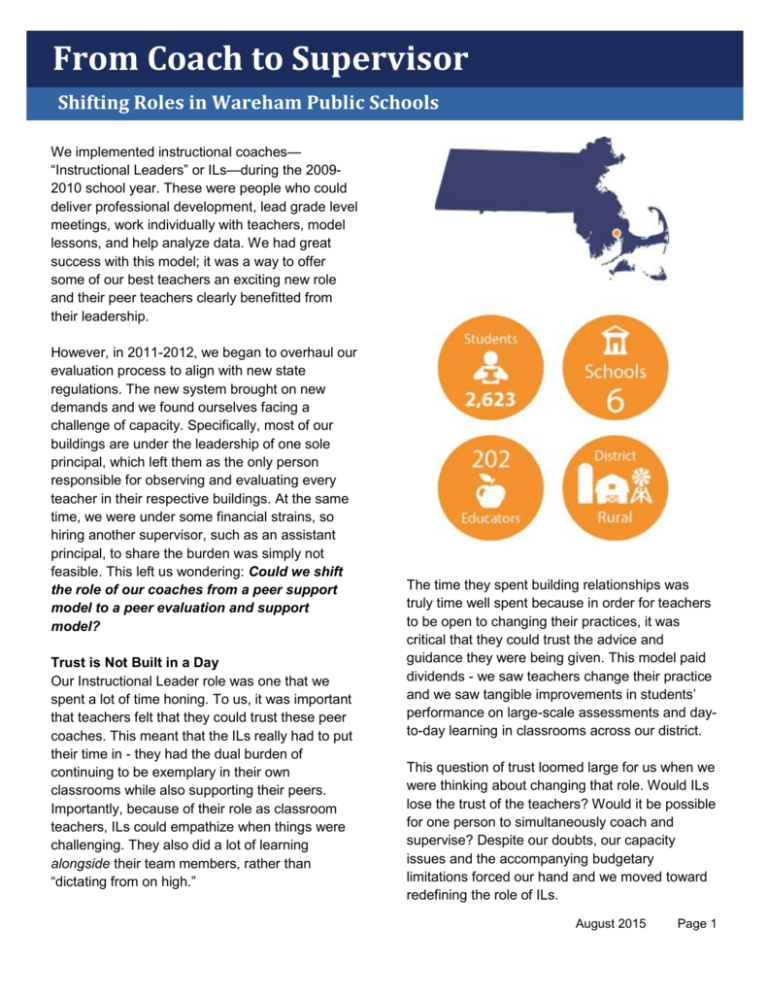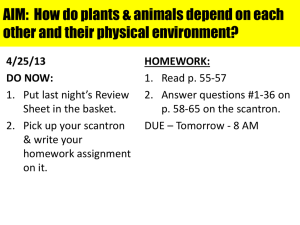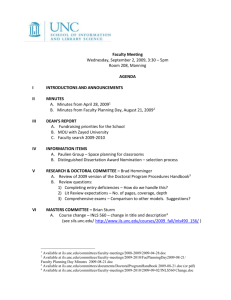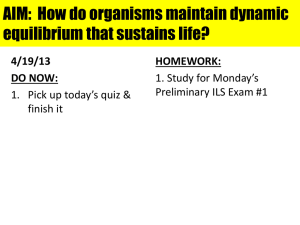MS WORD Document
advertisement

From Coach to Supervisor Shifting Roles in Wareham Public Schools We implemented instructional coaches— “Instructional Leaders” or ILs—during the 20092010 school year. These were people who could deliver professional development, lead grade level meetings, work individually with teachers, model lessons, and help analyze data. We had great success with this model; it was a way to offer some of our best teachers an exciting new role and their peer teachers clearly benefitted from their leadership. However, in 2011-2012, we began to overhaul our evaluation process to align with new state regulations. The new system brought on new demands and we found ourselves facing a challenge of capacity. Specifically, most of our buildings are under the leadership of one sole principal, which left them as the only person responsible for observing and evaluating every teacher in their respective buildings. At the same time, we were under some financial strains, so hiring another supervisor, such as an assistant principal, to share the burden was simply not feasible. This left us wondering: Could we shift the role of our coaches from a peer support model to a peer evaluation and support model? Trust is Not Built in a Day Our Instructional Leader role was one that we spent a lot of time honing. To us, it was important that teachers felt that they could trust these peer coaches. This meant that the ILs really had to put their time in - they had the dual burden of continuing to be exemplary in their own classrooms while also supporting their peers. Importantly, because of their role as classroom teachers, ILs could empathize when things were challenging. They also did a lot of learning alongside their team members, rather than “dictating from on high.” The time they spent building relationships was truly time well spent because in order for teachers to be open to changing their practices, it was critical that they could trust the advice and guidance they were being given. This model paid dividends - we saw teachers change their practice and we saw tangible improvements in students’ performance on large-scale assessments and dayto-day learning in classrooms across our district. This question of trust loomed large for us when we were thinking about changing that role. Would ILs lose the trust of the teachers? Would it be possible for one person to simultaneously coach and supervise? Despite our doubts, our capacity issues and the accompanying budgetary limitations forced our hand and we moved toward redefining the role of ILs. August 2015 Page 1 On an Island of their Own Our first step was to interview ILs to learn more about the parts of their job that we should try to preserve. Interestingly, as we examined the role of ILs a bit further, we learned that the role wasn’t always as smooth as their progress had made it seem. Because of their dual roles, a few tensions surfaced: ● Sometimes, ILs saw instruction that was poor, but their hands were tied as to how much they could address it. At some point, we really must confront poor instruction, but this was not possible on a strictly non-evaluative, peer-to-peer basis. ● ILs were a part of the same union as their peers (Unit A), but had a role that placed them a bit further towards the administrative side (Unit B). This meant that they sometimes felt like they were on an island of their own, separated from both teachers and administrators. ● Lastly, ILs’ roles varied (sometimes widely) across grade levels and buildings and it was nearly impossible to convene all ILs at once since they were each carrying a partial teaching load. This meant it was hard to offer any supports to ILs as a group and their ability to learn from each other was limited. We added all these considerations to our growing list of things we had to account for as we developed this new role. In all honesty, it took us a while to figure out what we were going to do (“We ate a lot of munchkins!” joked one member of the leadership team), but here is where we landed with a word about our rationale: The New Instructional Leader Role... Is a part of Unit A (the teachers’ union) Replaces part time teaching with part time small group work with students Has both coaching and supervising roles...but with a clear line between them Supports principals in completing teachers’ evaluations, but does not leave ILs solely responsible Requires applicants to have an administrative license Because... This was driven primarily by cost and we do still face challenges here, but not as many as we feared we would. The vast majority of interactions ILs have with their peers are positive ones, so this leaves us to work collaboratively to problem solve when needed. We had to manage ILs’ time so that they could receive support as a group. However, for purposes of trust/credibility, we wanted to maintain a direct connection between ILs and students. We have designed the role so that the IL interacts with two distinct groups of peers. For one group, they observe and provide information that informs the teacher’s evaluation. For the other group, they might go into a classroom and support students. But they only perform one of these roles with any given teacher to help maintain a clear divide between support and evaluation. We use TeachPoint to manage our teacher evaluation data. Using this technology, ILs observe, collect data, and give input into teachers’ evaluations, but they are never solely responsible for the entire evaluation. Principals make the final calls. We felt that training in supervision was important for this newly defined role. The downside of this is that it may detract some people from applying for the role. The upside is that the role provides a way for people who are looking for the “next step” another option besides leaving the classroom entirely to become a August 2015 Page 2 principal. It also keeps more of our top teachers in the district and helps us ensure that ILs are good at analyzing teaching practice and providing concrete feedback. Brave Teachers Needed Once we got clearer on the new role, it came time to make the transition. We had some ILs who stayed in the role and simply shifted their responsibilities, while in other cases we hired new ILs (mostly due to the new requirement of having a principal/administrator license). As we drafted the new job description, we joked that “bravery” should be listed as a requirement. We were hesitant as to how teachers within the same bargaining unit would fare. As it has turned out, we have seen a lot of positives emerge from this: teachers are actually more trusting of their evaluations because they see specific, actionable suggestions from peers who know their content area well; administrators are gaining skills and knowledge in how to evaluate and how to make sense of what they observe at a broad span of grades and subject; and the vast majority of interactions with teachers are positive ones, and we deal with the other ones on a case-by-case basis. We have also learned the great value of having a supportive principal. The principal has to lead with the notion that great instruction is everyone’s number one priority - we are in this as a team with a single goal in mind. Modeling instruction starts at the top with the principal. For example, one of our principals spent time helping teachers in their planning and was then invited to model instruction in classrooms. This type of administrator belief and behavior fostered a sense of pride in everyone’s work and sent the message that aside from safety nothing is more important in the school than everyone’s teaching and learning. Though ILs report that they miss teaching, the time they now get to spend as a group, both district-wide and by grade level, is very valuable. They don’t feel as much like they’re on their own island and we are seeing the benefits of having them calibrate and problem solve as a team. What’s Next: We are pleased to have navigated the challenge of transitioning from coaches to supervisors as we have filled a need that was very real and immediate. At first we had to choose a side of the fence for the ILs to fall on (Unit A or Unit B) but we’re not sure we got it right, so we will keep examining this Unit A/B question. If funding were unlimited, we would love to move ILs over to Unit B and expand some of their supervisory capacity. Providing the best support we can to our teachers is always a work in progress! August 2015 Page 3









